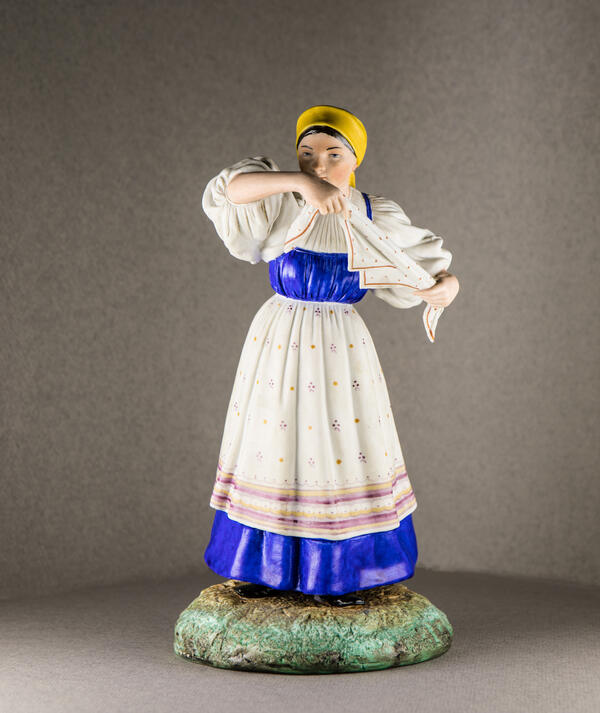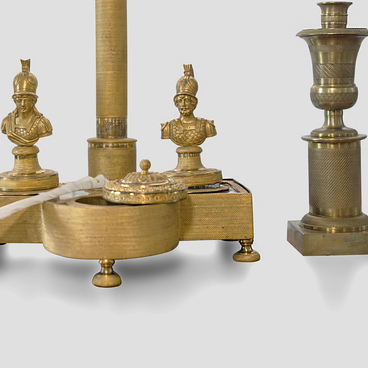In 1804, Karl Melli, a former sales representative of the porcelain manufacturer Francis Gardner, established his own factory based on Gardner’s enterprise. Seven years later, the factory was acquired by Alexey Popov.
In the 1810s–1840s, the factory employed about 250 people. By both using the techniques of the Gardner craftsmen and actively developing their own signature style, the enterprise earned an excellent reputation. In 1831, an industrial exhibition was held in Moscow where Popov’s products received a Small Gold Medal. The Moskovskiye Vedomosti newspaper praised the “brilliance of painting”, elegant and graceful forms, and “refined luxurious items” created by craftsmen from sand and clay.
The factory combined mass production with private orders, manufacturing products that were just as finely made and expensive as those produced by the Imperial Porcelain Manufactory.
The product range of Alexey Popov’s factory included tea services, dinnerware sets, vases, inkwells, and various interior pieces. Among the most popular items were figurines and compositions depicting mythological figures, animals, ladies and gentlemen, and peasants at work and leisure. Having started by creating copies and imitations, the craftsmen went on to design their own unique items characterized by highly realistic forms and painting. Popov’s products were distinguished by their signature colors — bright blue, green, and chestnut — developed in the factory’s laboratory.
The displayed biscuit figurine is characterized by soft and wavy detailing of the figure and clothing. This style was typical of the factory’s products for a decade before it was replaced by more pronounced and “sharper” lines. Painting on unglazed biscuit porcelain gives the statues a natural and lively look. Figurines depicting ordinary people were produced in a limited edition.
At the turn of the 20th century, Popov’s figurines served as models for other manufacturers.
Alexey Popov’s business was inherited by his son Dmitry and daughter Tatyana and later by his grandchildren. After that, the enterprise was sold (its last known owner was the merchant Fomichev). The unique color recipes were acquired by the factory of the Kornilov brothers, and the molds for casting dishes and interior pieces — by the factory of Ivan Ikonnikov.
Nowadays, Popov porcelain is highly appreciated
among art connoisseurs for its distinctive style, bright colors, and hand
painting.



